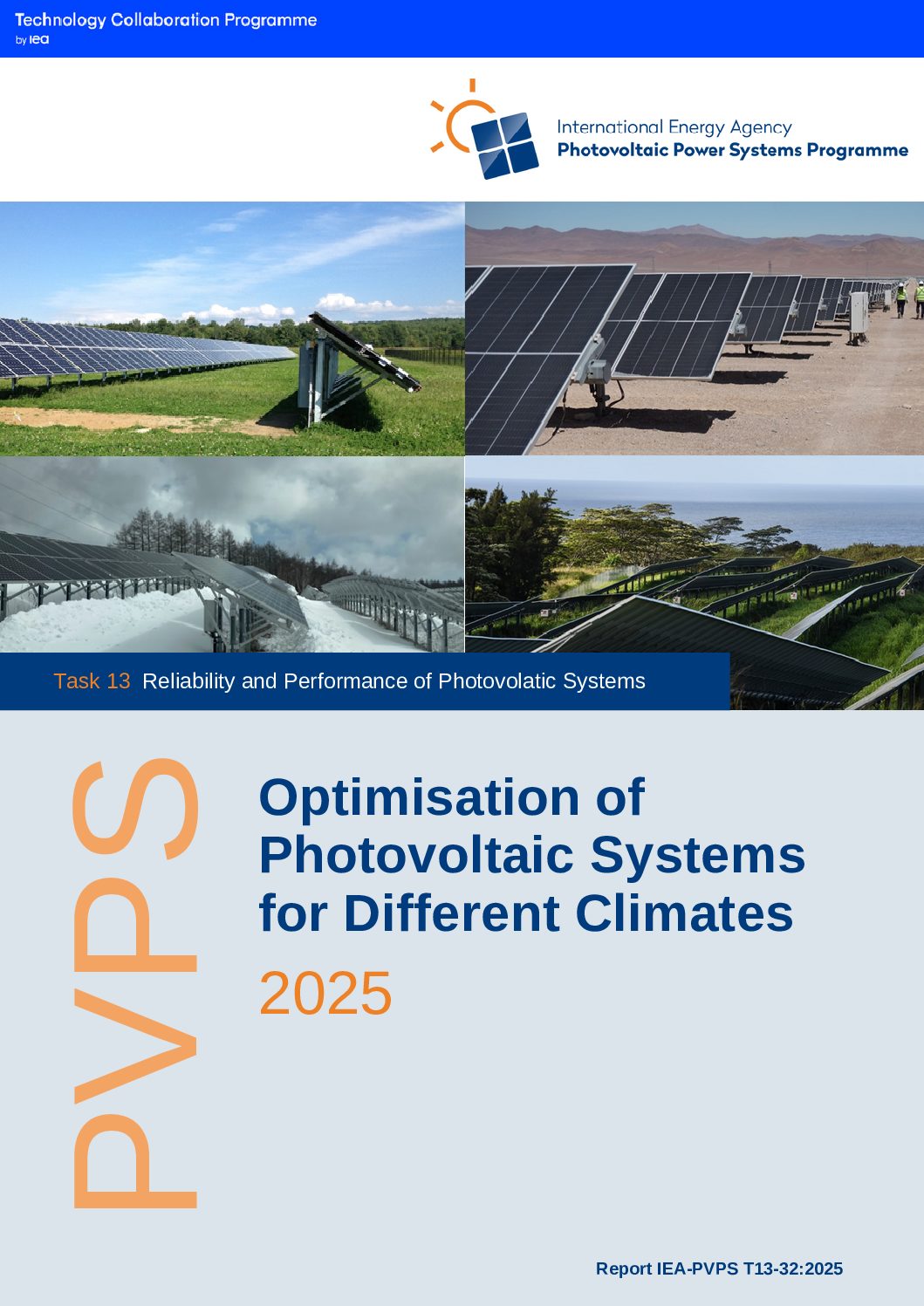This report provides targeted guidance for improving the performance and reliability of PV systems deployed in diverse and often harsh climates. By analysing climate-specific stressors and presenting proven mitigation strategies, it can serve as a practical resource for project planners and developers, striving to ensure the long-term success of PV projects worldwide.
As global PV deployment accelerates – driven by falling costs, advances in technology, and urgent climate goals– installations are increasingly located in challenging environments such as deserts, tropical regions, and cold, snowy areas. These regions often provide excellent solar resources but also introduce unique risks to PV system durability and performance, making tailored design and climate specific approaches essential.
Key Findings
- In cases of limited knowledge about site-specific requirements and/or unavailability of climate-specific PV modules, standard products are often deployed. Furthermore, the push for cheaper modules has driven the trend toward larger PV modules with thinner glass, cheaper encapsulants and backsheets, and reduced frame thickness, which are nowadays increasing the degradation and failure rates in harsh environments.
- Reinforced front glass, improved frame geometries, micro-crack-resistant interconnections, and advanced encapsulants like POE or silicone enhance durability in harsh conditions. Special coatings for soiling, heat, snow, or corrosion are being explored, but further studies are needed to confirm their longevity and cost-effectiveness.
- Very often, mitigation measures aimed at addressing one issue can inadvertently exacerbate another, making it essential to conduct thorough testing or gain a deeper understanding of actual load conditions to identify the most effective solution.
- Experience with climate-optimised PV modules is still limited, requiring more field data and lessons learned to be exchanged within the PV community.
This report underscores the importance of climate-optimised PV project design to secure reliable, cost-effective PV solar power systems – an essential element of the global clean energy transition.
